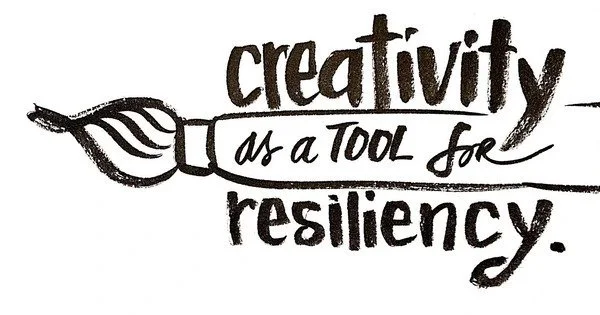Teaching children to be creative is a fantastic method to boost their resilience. Creativity creates a variety of attributes and talents that can assist youngsters in efficiently navigating challenges and disappointments. Creativity allows children to look beyond the box and devise novel solutions to issues. When confronted with hardship, individuals are more likely to view it as a puzzle to be solved rather than an obstacle.
Train elementary school pupils to be creative, and you can help them become more resilient in the face of real-life issues, according to new research. Researchers educated third, fourth, and fifth graders to apply literary strategies such as viewpoint shifting, counter-factual (what if) reasoning, and causal (why) thinking to boost creativity in dealing with obstacles in a short study.
According to Angus Fletcher, principal author of the study and professor of English at Ohio State University, as well as a member of the university’s Project Narrative, the strategies helped pupils come up with innovative, creative, and practical solutions to tackle problems.
“There are concerns about the resiliency of American children in the aftermath of COVID-19, as well as the perception that many kids are struggling in school and in life,” Fletcher said. “When things aren’t going as planned, creativity training can help kids come up with a backup plan.”
The study was recently published in the Journal of Creativity.
When you ask people to shift their perspective and imagine receiving advice from a friend, you get a lot more creative and effective solutions to problems than just trying to solve the problem yourself.
Angus Fletcher
Fletcher said the program used to help kids in this study was similar to one he and his colleagues used successfully with the United States Army, which resulted in Fletcher receiving the Public Service Commendation Medal, the Army’s fourth-highest public service decoration.
The researchers conducted two different studies with students at a summer camp in a Columbus suburb. One study divided 32 students into two groups. In the control condition, the youngsters were instructed to identify a unique characteristic about themselves. They were taught that this was an exceptional ability that could assist them in solving any situation.
In the creative condition, the students were instructed to imagine a friend who had done something unusual and to imagine them as their “creative friend” who could assist them in solving any challenge. Perspective-shifting is a sort of creativity training in which children look at a problem through the eyes of someone else.
“When you ask people to shift their perspective and imagine receiving advice from a friend, you get a lot more creative and effective solutions to problems than just trying to solve the problem yourself,” said Fletcher. And that’s what the study found. In one part of the study, teachers identified a problem that was challenging for their students – for example, not being able to go to a friend’s birthday party because you’re going to be out of town with your parents.

Students also consider a difficult problem in their own lives. “My brother has a communication disorder, my father has to be away for two months, and my sister bullies me” were among the issues raised.
Without the perspective-shift instruction, fewer than half of the students could provide a solution to age-typical difficulties and nearly none could provide a solution to their personal concerns. However, 94% of individuals who received perspective-shifting training supplied an answer to both.
Judges (who were trained teachers) also rated the children’s solutions on creativity, as assessed by how surprising or unique the solutions were. With the intervention, the average creativity score was 6.44 out of 10 (moderate creativity) compared to 3.05 (low creativity) for those who did not receive the perspective-shifting intervention.
These findings demonstrated how creativity training might increase children’s feeling of self-efficacy – the belief that they had some control and authority over their own lives, according to Fletcher. When asked to think about their own difficulties, the majority of the youngsters who received the intervention came up with a possible solution. However, 15 of the 16 children in the control group essentially gave up, according to Fletcher. They either stated that they didn’t know how to solve their situation or demonstrated some form of magical thinking, such as claiming to be a superhero.
A second longitudinal study with 28 children from the same camp was meant to assess the impact of a five-day, 10-hour narrative creativity curriculum on creativity, self-efficacy, and resilience. In addition to perspective-shifting, the kids were taught other story creation skills, such as causal thinking, according to Fletcher.
“If children are unable to solve a problem, we teach them to step back and consider what they are attempting to accomplish – the why problem,” Fletcher explained. “Take a step back and ask yourself, “Why does this matter?” We frequently discover that if you think more broadly about what you’re trying to do and why it’s so essential, you’ll see that there are other approaches to get what you want.”
At the end of the curriculum, the students were presented with age-typical problems similar to the first study and also examined one of their own problems. In order to test resilience, the researchers provided an unexpected challenge when the children presented their proposed solution to their problems: they told the kids it wouldn’t work. Results showed that every student who took the five-day curriculum was able to provide a second solution to both the age-typical and personal problems.
“With this training, the children were unfazed when their first solution failed. “They devised a backup plan, which is a good test of resilience,” Fletcher said. The second answer to the problems received greater creativity scores from the judges, averaging 7.5, indicating moderate to high ingenuity, compared to 5.45 for their initial approach.
Second-placed ideas also scored higher on utility, which measures how likely they are to work in practice. According to Fletcher, this study sends a positive message: there are things we can do to help youngsters cope with their challenges.
“We are at this moment in our society where our kids need help. We found that before this training, kids had this propensity to just give up when faced with problems. That could lead them to get angry, or embarrassed that they can’t solve their problems, or look for adults to offer solutions.”
He claims that narrative creativity training can educate youngsters how to approach real-life challenges that don’t have simple solutions. Fletcher believes that if done correctly, children can acquire creativity through the arts such as literature and theater. Teachers might have students imagine themselves as different characters, explore alternative perspectives, and engage in why and what-if thinking rather than simply asking them to study works of art.
















